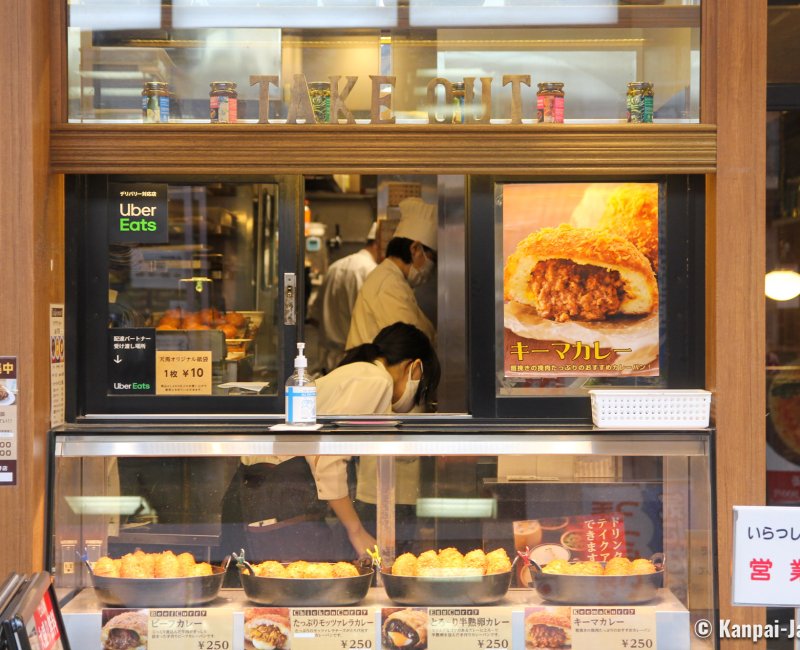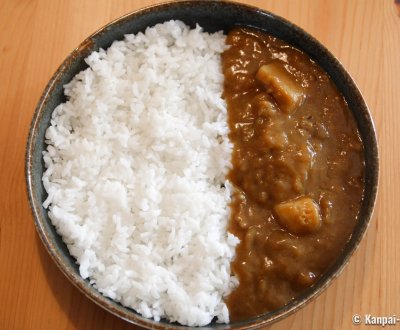Japanese Curry
The Typical National and Family Dish
Japanese curry is a thick and mildly spicy sauce blended with diced vegetables. It was introduced in the archipelago in the 19th century and has now become a national dish that all the Japanese enjoy. Curry dishes are easy to prepare, affordable and hearty, which makes them an integral part of the daily cooking at home or at a restaurant.
In the 2000s, curry (カレー kare in Japanese) became the dish eaten most often by the Japanese for the first time, even more than the popular tempura fritters and the traditional sushis 🍣. Now a classical dish of Japanese cuisine, the Japanese curry is easy to cook, very affordable, tasty and hearty. While it is a hot dish, it is nonetheless very popular in summer as it provides an interesting water intake and it helps regulating the body temperature by sweating.
A mild blend of spices and vegetables
The Japanese curry sauce is mild and slightly sweet, with a thick brown texture. It is made with the following main spices:
- Turmeric;
- Coriander;
- Cumin; and,
- Cardamom.
Optional ingredients can be black pepper, cinnamon, nutmeg or pepper. In addition to the sauce, the basic curry recipe in Japan also includes vegetables, usually:
- Potatoes;
- Carrots;
- Onions, and,
- Sometimes eggplants.
Veggies are diced and cooked, then mixed with the sauce so as to simmer in it. In its most basic preparation, Japanese curry is suitable to vegetarian and vegan diets, provided no animal fat is used when cooking the vegetables.
Usually however, the Japanese like to add a small amount of meat. There is often chicken, beef or pork used in a curry. Meat selection depends on the region and varies according to local preferences.
The Japanese’s 3 favorite curry variations
Delicious and easy to associate with many other dishes, the Japanese curry is very popular in 3 main types of dishes.
Kare-rice, the curry-rice
The curry rice, カレーライス kare-raisu in Japanese, is undoubtedly the most eaten and iconic dish in the country. It even has its own emoji called "Curry and Rice" and a national day in Japan, celebrated each year on January 22, and called カレーライスの日 Kare-raisu no Hi, meaning "curry rice day".
The dish is served in a soup plate, and ingredients are arranged on 2 sides:
- One side with the curry sauce, its vegetables and meat;
- The other side with Japanese white rice.
The kare-raisu is to be eaten using a spoon and scooping rice with sauce. It is often sided with pickled condiments, such as fukujinzuke (a mix of radish, eggplant, lotus root or ginger macerated in soy sauce) or rakkyo zuke, which are small crunchy onions marinated in vinegar.
Another variation, as famous and popular, is kare-raisu topped with a generous tonkatsu breaded pork cutlet. The dish is then called カツカレー katsu-kare and will satisfy those with a big appetite.
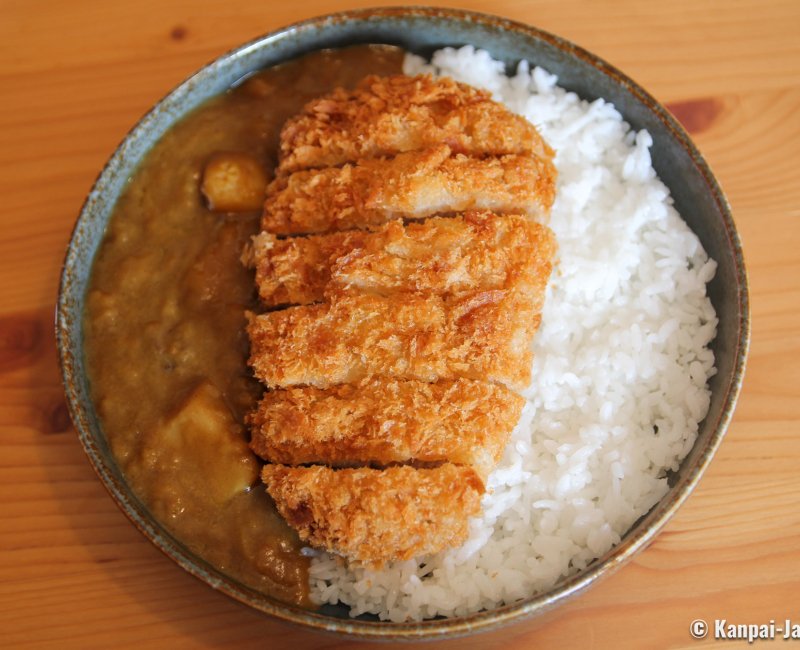
Kare-udon, the thick noodles in a curry broth
The curry is cooked as a base for a soup, with dashi broth and served with udon noodles in a large bowl. The dish is called カレーうどん kare-udon. The delicious taste of curry associates perfectly with the soft wheat’s used to make the noodles.
Note that kare-udon is served piping hot in restaurants and we recommend eating the noodles the Japanese way, by loudly slurping them so as to cool them off. The broth can be eaten afterward with a spoon.
Kare-pan, the curry-stuffed little bread
Bread is the third most popular food to eat with curry in Japan. It is then called カレーパン kare-pan and is a small donuts-like bread stuffed with curry sauce and sometimes a hard-boiled egg.
Made on the day, mouth watering and easy to eat on the go, kare-pan are sold in small specialized shops such as bakery-types stalls, with only a counter selling food to take away. They can also be purchased in 24/7 konbinis and at the supermarket, especially at lunch time.
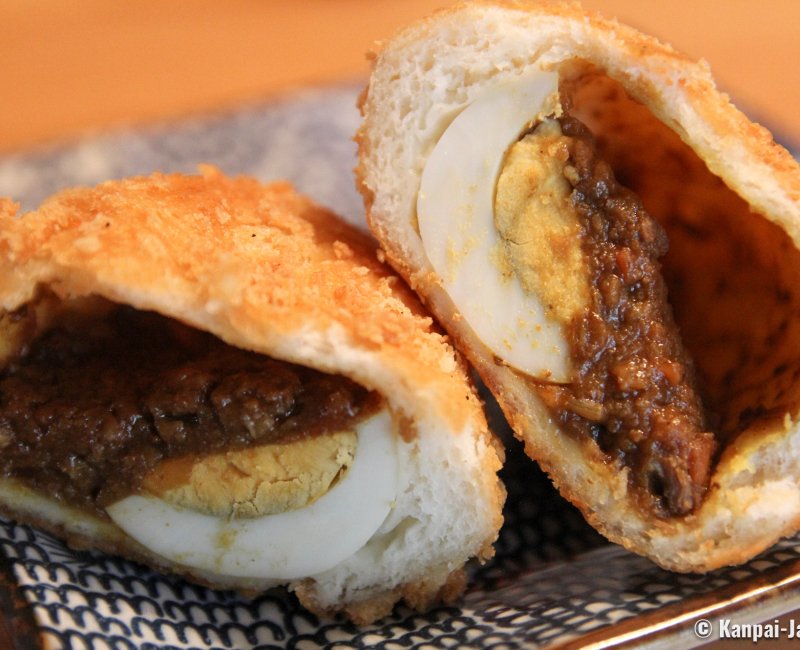
British origins
Japanese curry is a lot milder than its South-East Asia counterparts, that are accustomed to very spicy sauces, such as in Thailand. It is partly due to its origins, that are not directly linked to its geographic situation, but to trade relationships with the West.
It was indeed through the British navy’s ships that curry was introduced in the archipelago in the second half of the 19th century, when Japan, pressured by the West, ended its long isolationist period. At the times, India was a British dominion and curry a dish frequently served to the sailors of the Royal Navy.
Their ships transporting Indian curry powder berthed in Japan. This culinary novelty, that the Japanese military associated to the West, was very much enjoyed and the Imperial Marine came to also introduce curry in its men’s basic diet. Even today, curry is served every Friday at the Japanese navy self-defense forces’ mess. Schools and university canteens also frequently serve curry to the young people who are fond of it.
Where to eat curry in Japan?
During the Meiji Era (1868 – 1912), curry dishes spread within the Japanese society and gradually appeared in cook books and restaurants’ menus.
Ready-made curry at the supermarket
The food industry took on the opportunity of this popular success, and in the 1920s, began selling a ready-to-use spice mix. In 1954, the hard curry block appeared as a dried tablet of roux that can be bought at the supermarket. Cost-saving, easy to preserve and to cook, this curry preparation quickly spread in all Japanese households and it is now very easy to find some outside Japan, and buying online. An instant Japanese curry with a sauce including vegetables, that just need to be warmed up, is also available.
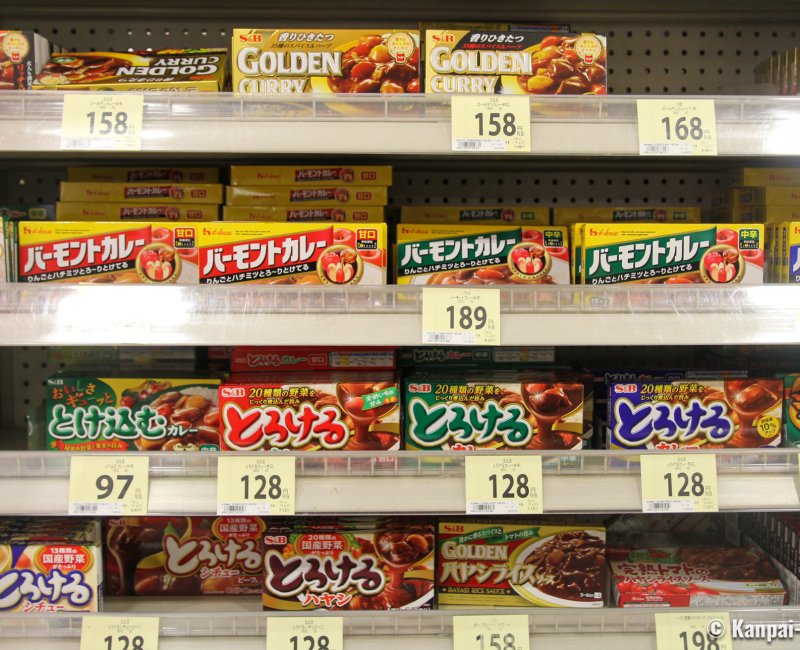
Specialized Japanese restaurants
In Japan, there are 2 types of specialized places to eat curry:
- The typical small eateries, operated by only one cook and serving a daily food, simple and delicious at lunch. The kare-raisu dish, or the optional tonkatsu or ginger pork is often served. Allow approx. ¥800 (~US$5.09) for a curry rice in Tokyo in one of these small restaurants;
- Curry restaurants, whose menus are only based on this dish with different variations that can be traditional or original and often excellent, that we recommend to any curry amateurs. Allow on average from ¥1,200 (~US$7.63) to ¥2,000 (~US$12.72) at lunch in these most sought after places.
We put up a non-exhaustive selection of curry restaurants in Tokyo:
- 薬膳カレー じねんじょ谷中店 Yakuzen Curry Jinenjo in Yanaka;
- ヤミツキカリー 飯田橋店 Yamituki Curry in Iidabashi;
- カレーやさん リトルショップ Little Shop Curry in Shibuya;
- 路地裏カレーサムライ Rojiura Curry SAMURAI in Shimokitazawa;
- 麻布十番 薬膳カレー 新海 虎ノ門店 Spice Curry Shinkai in Kamiyacho; and,
- 札幌ドミニカ銀座店 Sapporo Dominica between Yurakucho and Tokyo Station.
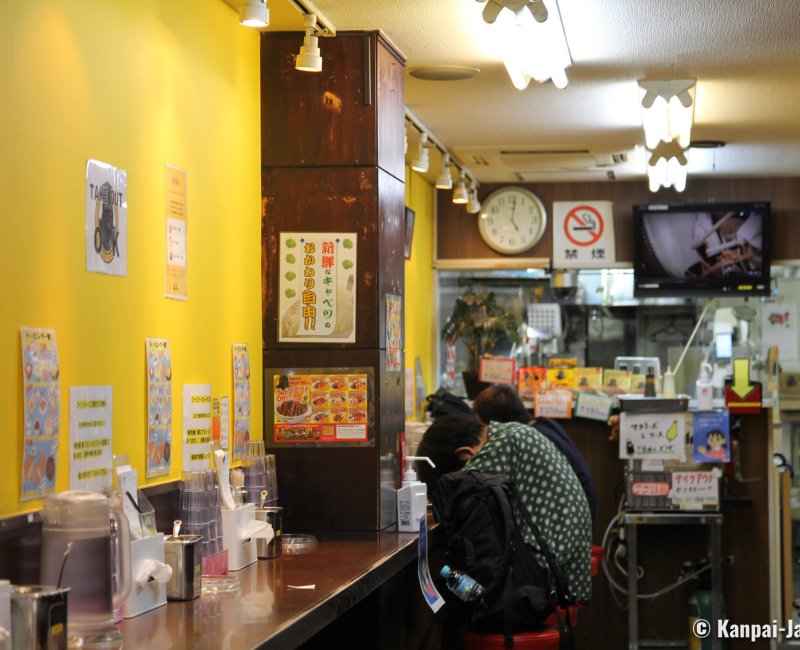
Fast food chains
The fast food chains specialized in Japanese curry are certainly widely known among sightseers roaming the country, and are spread throughout the archipelago. The most famous are:
- Curry House CoCo Ichibanya, the first and very popular curry chain in Japan, with shops that are easy to find thanks to their famous yellow and brown logo. It is very inexpensive but does not give the best value for money;
- Go ! Go ! Curry with its iconic gorilla, it serves a very affordable and rather qualitative curry;
- Moyan Curry is a qualitative brand with joints only in Tokyo and Nagoya. They notably have less caloric and gluten-free curry.
There are also micro fast food stalls on train 🚅 stations platforms, to eat standing at the counter a Japanese curry in a few minutes before boarding one’s train.
Choosing the spiciness of the sauce
Last but not least, when ordering a Japanese curry one must choose the strength of the sauce’s spices. Usually the choice falls between:
- 甘口 amakuchi which means "mild or moderately spicy";
- 中口 chukuchi that can be translated as "medium"; or,
- 辛口 karakuchi meaning "strong".
While Japanese cuisine is not usually very spicy, and compared to culinary customs 🛂 in Asia, these categories are not to be considered lightly. Curry restaurants in Japan do indeed generously use spices and it is recommended to choose wisely so as to enjoy your meal. Water is the best drink to have with a curry dish, whose taste is already quite strong.
